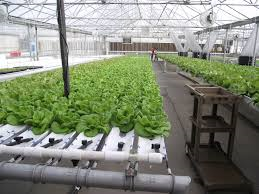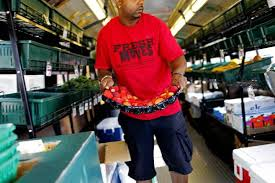By Angela Moreno-Long
It is an unfortunate reality that in the United States the most economically deprived populations also have the highest rates of inequity of access to healthy and affordable food (Desjardins, 2010, p.87). Food deserts are pervasive in low income neighborhoods which often have high minority populations (Morland, 2007, p.178), low access to public transportation, and depressed economies. The health of residents living in these areas has always been greatly affected by inequitable access; however the national obesity epidemic has raised awareness of serious problems in the food environment and opened a dialogue about the larger social and economic forces which are fuelling this epidemic. Obesity is no longer a problem addressed at the scale of an individual, instead public health is “to some degree…a community responsibility” (Karpyn, 2012, p.28).
This new large scale approach to improving health and increasing equitable access to healthy food raises the question, who is responsible, or should be responsible, for implementing change? Does the task fall on community members? Should federal or local governments take an active role in addressing food deserts, and if so at what scale? What is the role of private investment or corporate intervention? In addition to increased policy and debate at the federal level, two main types of approaches have emerged: one focuses on introducing more supermarkets and transportation opportunities, while the other “circumvents the conventional food supply chain” and emphasizes small scale, community based production of food (Desjardins, 2010, p.87).
The large scale spatial and contextual approach to reducing inequity uses policy and economic development tools to facilitate and attract the development of supermarkets in food deserts. This could be medium scale local grocers as well as corporate investment from retailers like Wal-Mart. While the development of substantial food establishments has the potential to integrate marginalized neighborhoods into a larger network, there is also the possibility for risks. Blindly introducing supermarkets just to increase the number of retailers in the area does not take into consideration local needs and potential conflicts with a large retailer (Desjardins, 2010). In contrast, grass-roots, place based initiatives are very effective at responding to a local context but may not successfully integrate the area into the larger political and social arena. There are immediate and visible changes with community organizations like local food vendors, farmer’s markets, and community gardens; however they may not last into the future if the regional economy and social situation remain depressed.
Some examples of different nonprofit, community-based initiatives:
GrowHaus, in Denver, CO is an indoor farm, market and educational center in the historically low income Elyria-Swansea neighborhood (Growhaus.com). They focus on a twofold goal: improving public health through local food cultivation, education and distribution as well as creating jobs and a long-term infrastructure based on local urban farming. The organization has extensive facilities which include a centrally located market place and an aquaponic farm.

The Growhaus education facility for workshops, entertainment, and activities (source: www.thegrowhaus.com)
Fresh Moves Mobile Market in Chicago, Illinois is another example of a nonprofit community activist created program that works within the framework of their neighborhood. Founders Steven Casey, Sheelah Muhammad and Jeff Pinzio recognized that in their community, “individual markets do not address widespread need quickly or efficiently”. By eliminating a fixed structure, “the team realized they could inexpensively reach many communities” (Architecture for Humanity, 2012). They retrofitted a bus to become a mobile market which could drive quickly to many different neighborhoods in the region.
Community members and corporate retailers are not the only people attempting to address the public health risk posed by inequitable and unhealthy food. First-lady Michelle Obama’s Let’s Move! Campaign is a nationwide effort to promote healthy living and eating habits through community engagement and urban farming. In addition, local governments are taking action in order to protect citizens from unhealthy food. In response to rising obesity and public health concern the city council of Los Angeles implemented a one year moratorium on any opening of new fast food restaurants in South Central L.A. The city was the first city to prohibit new business because of health and not aesthetic reasons and allows for new enterprise and avoids a fast food monopoly. There is the possibility of unintended consequences like harming small business owners that have the potential to benefit the neighborhood, however this is an important and bold step by a local government in protecting vulnerable neighborhoods (Severson, 2008).
Ultimately the cause and perpetuation of food deserts is complex and nuanced so no one solution can solve every problem in areas with food deserts. Each case and place is highly dependent on neighborhood environment and regional forces and requires creative solutions which respond to the local context. Nevertheless the projects presented here are examples of successful frameworks for improving health and food environments.
BIBLIOGRAPHY
Anderson, E. &, Cushing, B. &, Davis, A. (2012). Watering the Food Desert: A Policy Analysis of Urban Food Access Disparities in the Lower Ninth Ward, New Orleans (Senior Comprehensive Exercise). Carleton College.
Architecture for Humanity (Organization). (2012). Design like you give a damn. New York; London: Abrams, 298-301.
Desjardins, E. (2010). The Urban Food Desert: Spatial inequality or opportunity for change?. In Blay-Palmer, A. (Ed.). Imagining Sustainable Food Systems: Theory and Practice (87-104). Burlington, VT: Ashgate. Retrieved from http://search.ebscohost.com/login.aspx?direct=true&scope=site&db=nlebk&db=nlabk&AN=389842
Karpyn A, Y. C., Weiss S. (2012). Reestablishing healthy food retail: changing the landscape of food deserts. Childhood obesity (Print), 8(1), 28–30.
Morland, K. &, Wing, S. (2007). Food Justice and Health in Communities of Color. In Bullard, R.D. (Ed.) Growing Smarter: Achieving Livable Communities, Environmental Justice, and Regional Equity (171-189). Cambridge, MA: MIT.
Ogburn, S. (2010, 5 October). Would a Walmart solve West Oakland’s and Nashville’s food problems? Grist. Retrieved from http://grist.org/article/food-2010-10-05-would-a-walmart-solve-oaklands-and-nashvilles-food-problems/.
Severson, K. (2008, August 13). Los Angeles Stages a Fast Food Intervention. The New York Times. Retrieved from http://www.nytimes.com/2008/08/13/dining/13calo.html
The GrowHaus – Home. (n.d.). Retrieved October 24, 2013, from http://www.thegrowhaus.com/.


